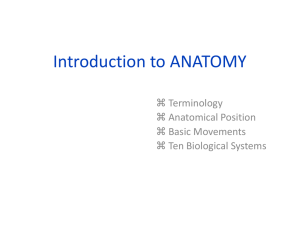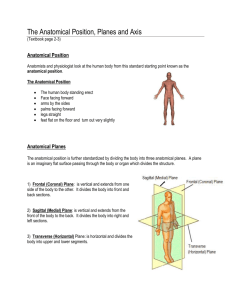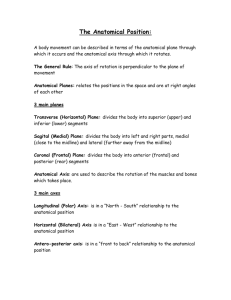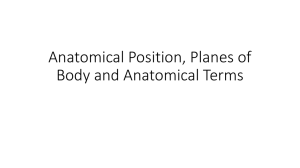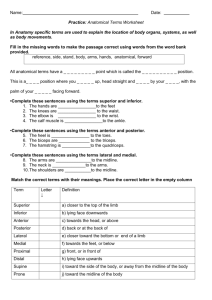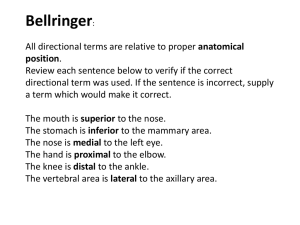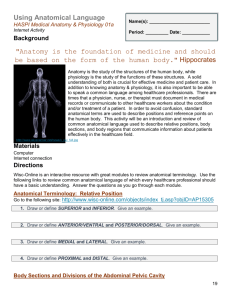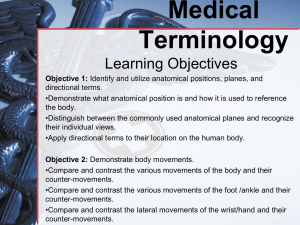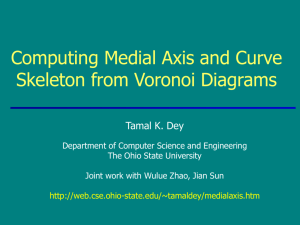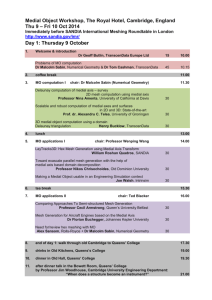ANATOMICAL PLANES & TERMINOLOGY
advertisement
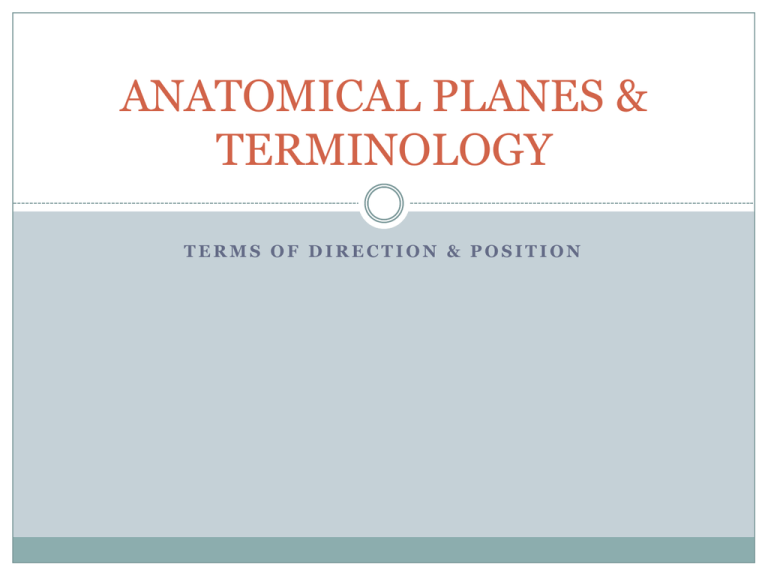
ANATOMICAL PLANES & TERMINOLOGY TERMS OF DIRECTION & POSITION The Anatomical Position Arms down by side Palms up Head and eyes forward Legs parallel Feet together Movement Rules of the Body A body movement can be described in terms of the anatomical plane through which it occurs and the anatomical axis through which it rotates. The General Rule: The axis of rotation is perpendicular to the plane of movement. Anatomical Planes: relates the positions in the space and are at right angles of each other The Three Anatomical Planes Transverse (Horizontal) Plane: divides the body into superior (upper) and inferior (lower) segments Sagital (Medial) Plane: divides the body into left and right parts, medial (close to the midline) and lateral (further away from the midline) Coronal (Frontal) Plane: divides the body into anterior (frontal) and posterior (rear) segments Axes of Movements: The axis of rotation is always perpendicular to the plane of movement!! Anatomical Axis: are used to describe the rotation of the muscles and bones which takes place. Longitudinal (Polar) Axis: is in a “North - South” relationship to the anatomical position Horizontal (Bilateral) Axis is in a “East - West” relationship to the anatomical position Antero-posterior axis: is in a “front to back” relationship to the anatomical position Therefore: Flexion & Extension – always occur through medial plane & rotate around the horizontal axis Adduction & Adduction – always occur through frontal plane & rotate around the anteriorposterior axis Medial & Lateral Rotation – always occur through horizontal plane & rotate around the polar axis Anterior/Posterior Anterior—to be situated near or toward the front of the body Posterior--to be situated toward the back of the body Superior/Inferior Superior—means to be situated toward the upper part or head of the body, positioned above another organ or structure Inferior—to be situated toward the lower part of the body or positioned below another organ or structure Unilateral/Bilateral Medial/Lateral Unilateral—on one side Bilateral—on both sides Medial—to be closer to the midline of the body or a structure, being internal as opposed to external Lateral—to be farther away, in the direction of either side, from the midline of the body or a structure Proximal/Distal Proximal: Toward or nearest the trunk or the point of origin of a part Distal: Away from or farthest from the trunk or the point of origin of a part How it Looks Examples Movement Axis of Rotation Plane of Motion Stride Jump Anterior-posterior Frontal Cart Wheel Anterior-posterior Frontal Elbow Extension Horizontal Medial Nodding Yes Horizontal Medial Tuck Horizontal Medial Somersault Horizontal Medial Twirling Polar Horizontal Shaking Head No Polar Horizontal
